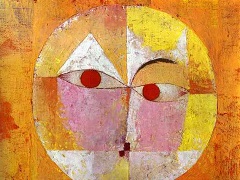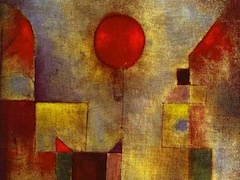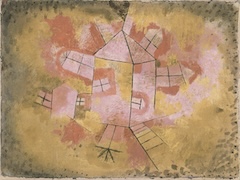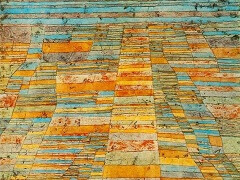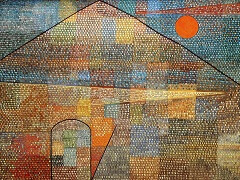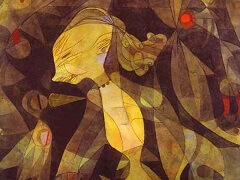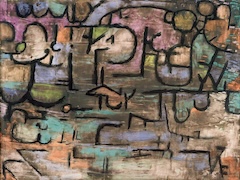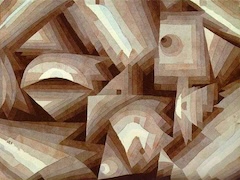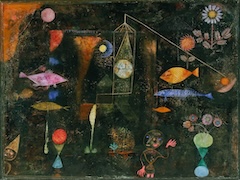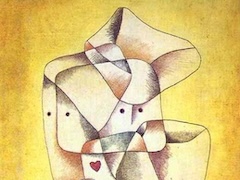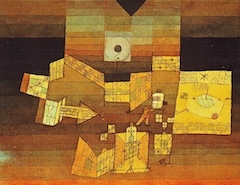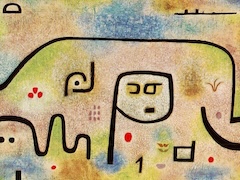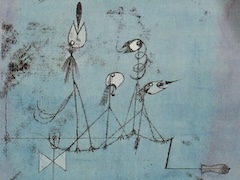Once Emerged from the Gray of Night, 1918 by Paul Klee
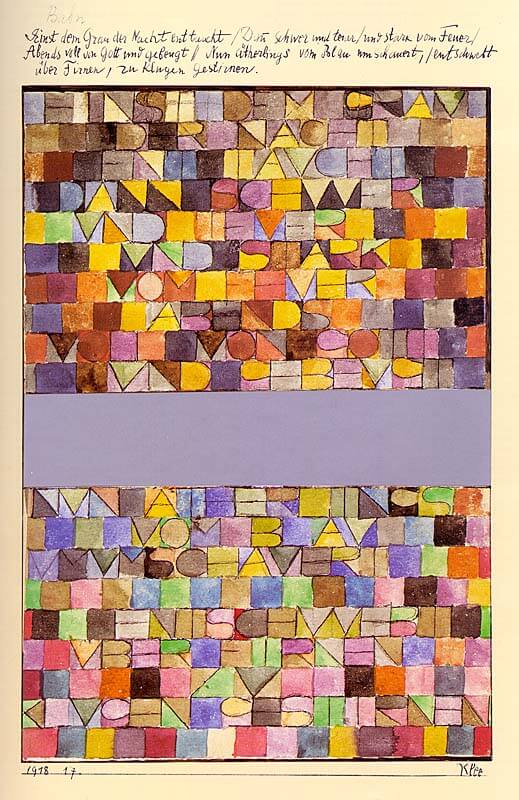
This picture-poem ("Einst dem Grau der nacht entaucht . . .") effects a fusion of plastic and poetic. The origin of the poem is still unknown; this verse is not to be found either in "Psalms," or in the Chinese poems. Klee could very well have composed it himself for its content is close to his thought. It translates as:
Once emerged from the gray of night
Heavier and dearer and stronger
Than the fire of the night
Drunk with God and doubled over.
At present ethereal
Surrounded by blue
Soaring over the glaciers
Toward the wise constellations.
The structure of the poem determines the composition. The weft of the image is a wall of colored squares of more or less the same size. The black lines of the Arabic capitals determine other chromatic partitions like the stones of a mosaic. The two parts of the composition, separated by a band of silver paper, correspond with the two stanzas of the poem. Even the chromatic schema is impressed by the text: From the beginning to the end of the poem a luminous blue emerges, little by little, from the initial gray.
Klee's first attempt to mix painting and poetry was in 1916, with a series of six watercolors conceived from Chinese poems. In this work, where the image is preceded exceptionally - but also necessarily -by the title-text, it should definitely be noted that the original order of the colored squares is imposed by the logos, even though the letters lose their linguistic function. This is no doubt what the wide gray band in the center of the surface confirms. Where the text disappears, there is only chaos, that is if we follow Klee's theory of color, which is the inorganic mix (pigmentary or subtractive) of colors that justly gives gray. "In the beginning was the verb ..." said Klee in the "Creative Credo."
Letters and numbers were highly esteemed by Klee as a way of expressing himself in an original manner. The "Creative Confession" gives some indication of the relationship he sees between a formal sign and a lived experience. Regarding these, he raises the problem of the appearance and essence of written signs. Letters and numbers not only reveal a precise experience but also contain a certain sense of a "history of form."

